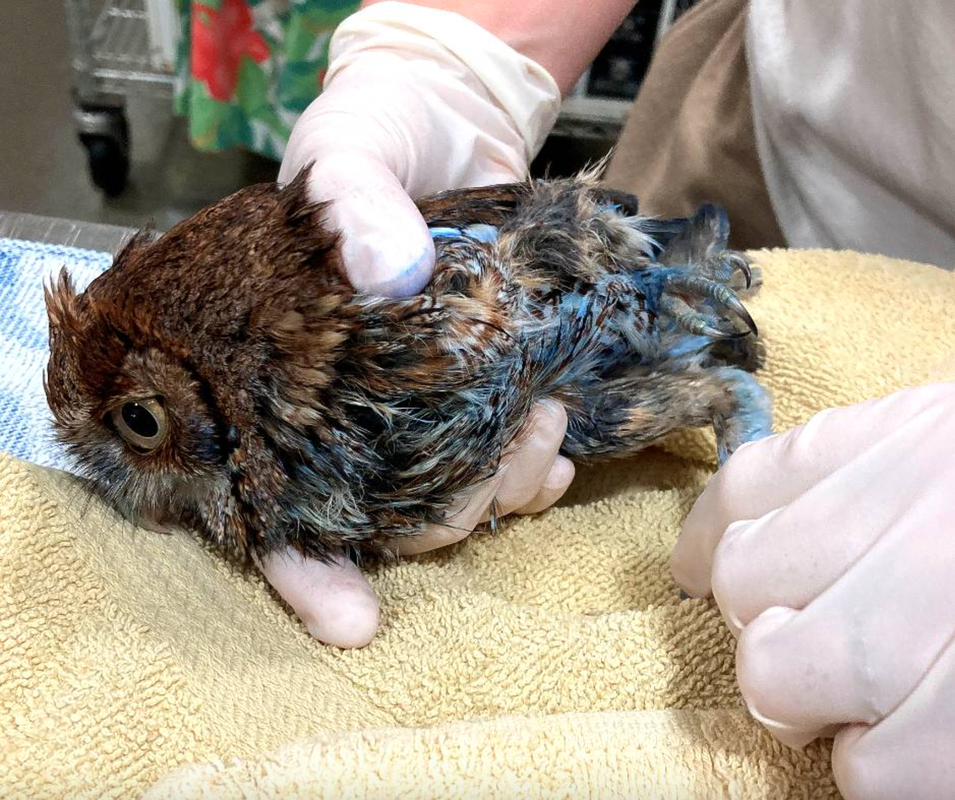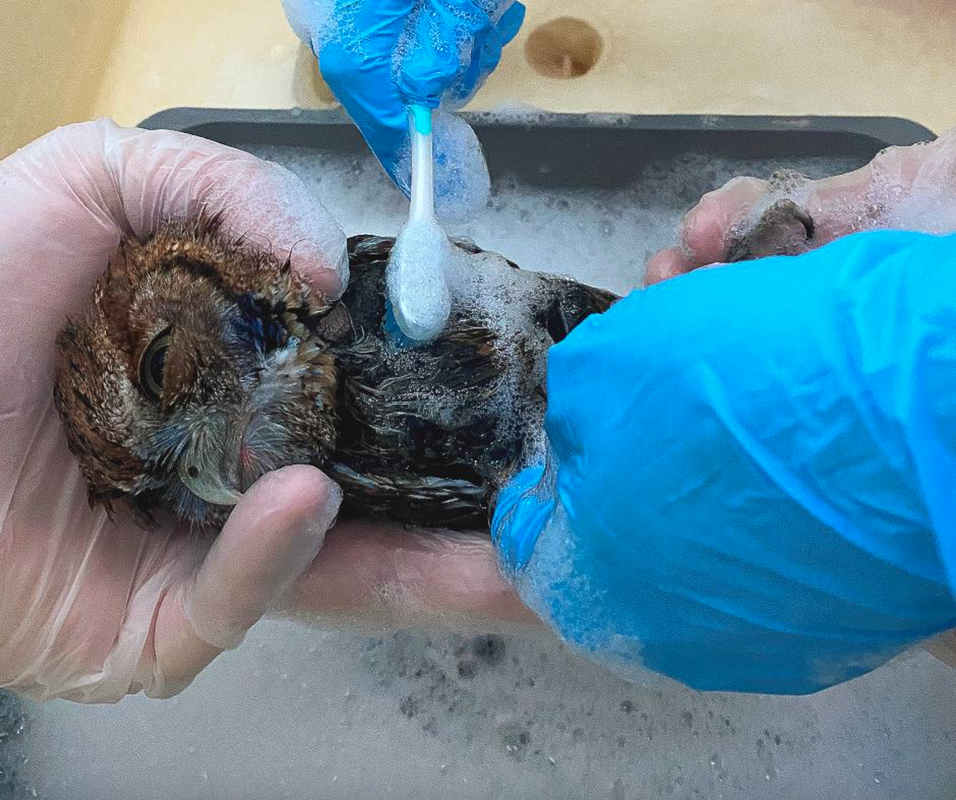When using a portable toilet, have you ever looked down into the murky blue lagoon below the seat? Can you imagine being submersed in this sticky, pungent water? An eastern screech owl rescued last week by the von Arx Wildlife Hospital at the Conservancy of Southwest Florida certainly can. The owl was tolerant of the bath, and the hospital staff was able to successfully remove the blue chemicals from its feathers. After the bath, it was able to return to the ICU to dry off. On its third day at the hospital, the owl was finally able to eat on its own, and continued care for this eastern screech owl is ongoing. If the blue chemicals were from a portable toilet, as the von Arx Wildlife Hospital presumes, then the Maricopa County government website states that the blue liquid consists of sodium hydroxide, or something similar, and that its purpose is to prevent the waste in the portable toilet from turning septic and becoming malodorous. The D-tox Group, a portable toilet company, claims that the liquid is dyed blue to mask the appearance of the waste in the tank and also turns green to indicate when the portable toilet needs to be serviced. Both the D-tox Group and Sucro Portable Sanitation Products say that the blue liquid is a concoction of four or five chemicals, including biocides to prevent bacteria growth, blue dye, fragrances to decrease bad odors, surfactants (detergents) to decrease surface tension and increase the effectiveness of the biocides and fragrances, and sometimes Metazene to neutralizer odor in the vapor above the surface of the water. If these were indeed the chemicals coating the owl, it is a good thing that the hospital staff was able to completely wash them off. The von Arx Wildlife Hospital is the wildlife care facility at the Conservancy of Southwest Florida. Since 1979, this hospital has been treating and rehabilitating Florida’s native animals in need with the goal of releasing them back into the wild. According to the hospital website, the von Arx Wildlife Hospital staff members treat around 4,000 animals annually; they report 56% to be birds, 35% mammals, and 9% reptiles. The Conservancy of Southwest Florida, the hospital’s parent organization, was founded in 1964 with the goal of protecting the water, land, and wildlife of Southwest Florida, including Collier, Charlotte, Lee, Hendry, and Glades County. Some of the organization’s current key milestones include conserving the Southern Golden Gate Estates and protecting sea turtle hatchlings through the Sea Turtle Monitoring and Protection Program. You can learn more about all 10 of the organization's key milestones here. If you want to get involved, the Conservancy of Southwest Florida offers an array of volunteer positions and opportunities that you can check out here. You can also donate to help support any of this organization’s missions, including the treatment of sick and injured animals, such as the eastern screech owl which found itself covered in blue porta-potty liquids. Article by Ema Tibbetts
0 Comments
Your comment will be posted after it is approved.
Leave a Reply. |
CATEGORIES |
|
|
Vertical Divider
|
Can't get enough?Uncover more of Florida through our channels below!
|
© COPYRIGHT 2015. ALL RIGHTS RESERVED.



 RSS Feed
RSS Feed